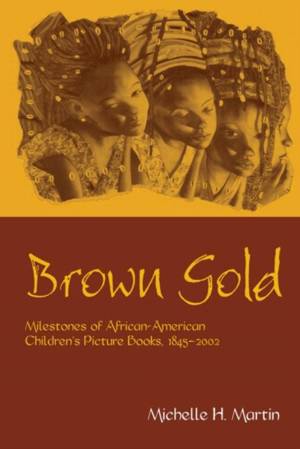
- Retrait gratuit dans votre magasin Club
- 7.000.000 titres dans notre catalogue
- Payer en toute sécurité
- Toujours un magasin près de chez vous
- Retrait gratuit dans votre magasin Club
- 7.000.0000 titres dans notre catalogue
- Payer en toute sécurité
- Toujours un magasin près de chez vous
Description
Brown Gold is a compelling history and analysis of African-American children's picturebooks from the mid-nineteenth century to the present. At the turn of the nineteenth century, good children's books about black life were hard to find -- if, indeed, young black readers and their parents could even gain entry into the bookstores and libraries. But today, in the "Golden Age" of African-American children's picturebooks, one can find a wealth of titles ranging from Happy to be Nappy to Black is Brown is Tan. In this book, Michelle Martin explores how the genre has evolved from problematic early works such as Epaminondas that were rooted in minstrelsy and stereotype, through the civil rights movement, and onward to contemporary celebrations of blackness. She demonstrates the cultural importance of contemporary favorites through keen historical analysis -- scrutinizing the longevity and proliferation of the Coontown series and Ten Little Niggers books, for example -- that makes clear how few picturebooks existed in which black children could see themselves and their people positively represented even up until the 1960s. Martin also explores how children's authors and illustrators have addressed major issues in black life and history including racism, the civil rights movement, black feminism, major historical figures, religion, and slavery. Brown Gold adds new depth to the reader's understanding of African-American literature and culture, and illuminates how the round, dynamic characters in these children's novels, novellas, and picturebooks can put a face on the past, a face with which many contemporary readers can identify.
Spécifications
Parties prenantes
- Auteur(s) :
- Editeur:
Contenu
- Nombre de pages :
- 252
- Langue:
- Anglais
- Collection :
Caractéristiques
- EAN:
- 9780415646277
- Date de parution :
- 25-09-12
- Format:
- Livre broché
- Format numérique:
- Trade paperback (VS)
- Dimensions :
- 152 mm x 229 mm
- Poids :
- 340 g

Les avis
Nous publions uniquement les avis qui respectent les conditions requises. Consultez nos conditions pour les avis.






